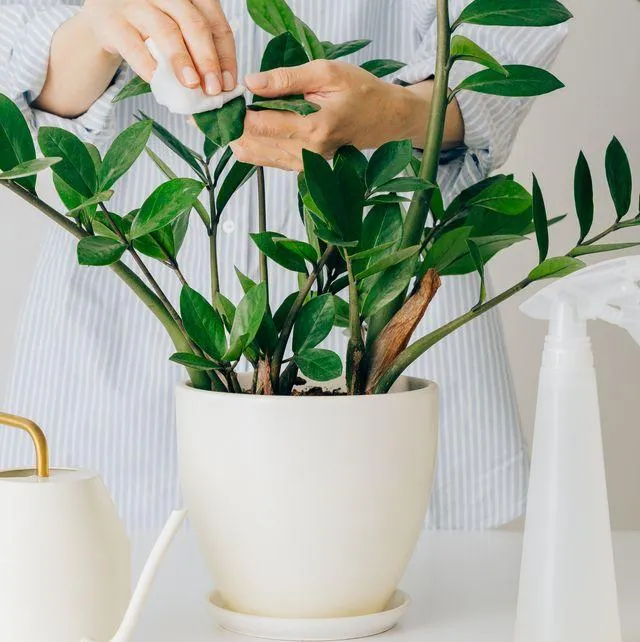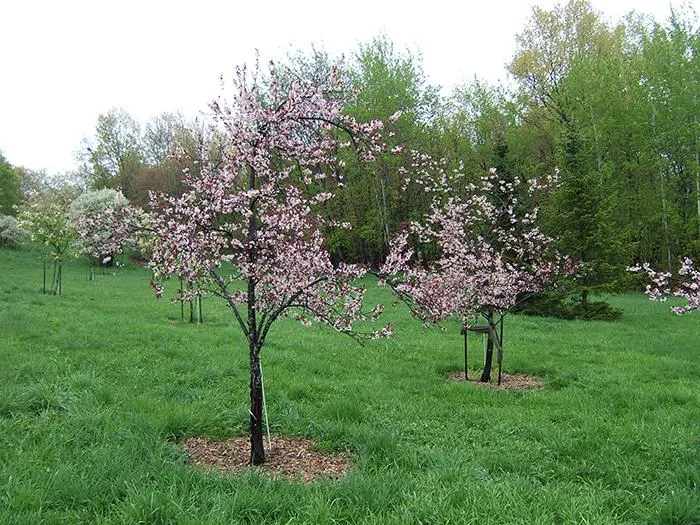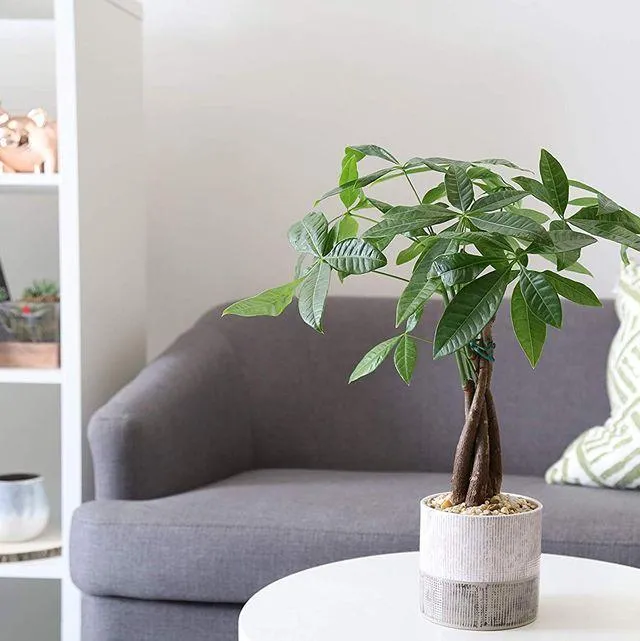Everything You Need to Know About Growing Indoor Trees
If you search for “indoor trees”, chances are you want to add some greenery to your home but don’t have outdoor space. Growing trees inside comes with its set of challenges, but with the right choices and care, you can have a leafy indoor jungle. This article will address all the intentions a user may have when searching this topic.
Why Are Indoor Trees a Good Idea?
There are many benefits to keeping trees indoors:
- They improve air quality by absorbing carbon dioxide and releasing oxygen. Indoor trees can effectively scrub the air of airborne pollutants like benzene, trichloroethylene, and formaldehyde which are emitted from furniture, building materials, and home cleaning products.
- Trees have a positive psychological effect and help reduce stress, anxiety, and depression. Having trees in your home creates a feeling of connection to nature.
- Certain trees like English ivy, palms, and peace lilies are excellent at removing indoor air pollutants like benzene and formaldehyde, making them a NATURAL air purifier.
- As a living decor item, indoor trees add beauty, ambiance, and warmth to spaces. Their year-round greenery provides visual interest without much maintenance.
Overall, having indoor trees makes your home a healthier, more inviting place to live or work. Their presence can boost mood and productivity.
Which Types of Trees Are Best for Indoors?
Not all trees are suitable for indoor conditions. Here are some top choices:

- Money trees (Pachira aquatica): Extremely hardy and forgiving, money trees thrive in low-light. Their braided trunks and heart-shaped leaves make them stylish.
- Bamboo palm (Chamaedorea seifrizii): A popular small palm with arching leaves. Tolerates low light and a wide range of conditions very well.
- Corn plant (Dracaena fragrans): Striking leaves in variegated colors. Very low maintenance and tolerant of neglect.
- English ivy (Hedera helix): Hardy vine ideal for hanging baskets. Removes air toxins and requires little sun.
- Peace lily (Spathiphyllum): Thrives in low-light, humidity-loving. Flowers when happy and wilts when thirsty, making care super easy.
These species withstand low light, dry air, and irregular watering better than others. Stick with them for low-effort indoor trees.
How to Care for Indoor Trees
Caring for indoor trees may seem intimidating but with the right techniques, it’s quite straightforward:
- Provide adequate light. Most indoor trees do best near a south-facing window to maximize sunlight exposure.
- Water properly – when the topsoil feels dry to touch. Overwatering causes more issues than underwatering.
- Fertilize every 2-3 months during the growing season with a diluted liquid houseplant food.
- Repot when roots grow out the drainage holes, using a pot just 1-2 inches larger to discourage excessive root growth.
- Prune to maintain shape and size and remove any diseased or damaged growth.
- Dust leaves weekly with a dry cloth to remove debris.
- Boost humidity near plants using a pebble tray or humidifier if leaves brown at edges in very dry air.
With some TLC according to their basic needs, your indoor trees will thrive for years to come.
Common Issues with Indoor Trees and How to Fix Them
No matter how much you try, issues may arise. Here are solutions:

- Leaf drop: Overwatering is a main cause. Improve drainage, check for root rot, and water less frequently.
- Yellowing leaves: Could be under or overwatering, fertilizer burn, or not enough light. Adjust care and move to sunnier spot.
- Brown leaf tips/edges: Sign of dry air. Use pebble trays, humidifiers, or group plants together to raise local humidity.
- Sparse growth: Lack of fertilizer or light. Feed every few months in growth season and moved to brighter area.
- Pests: Isolate and spot treat with insecticide soap or neem oil. Prevent recurrence with cleanliness and not overcrowding plants.
With observation and quick action, you can easily get your trees back to full health after common issues arise.
Final Thoughts on Keeping Indoor Trees
Growing trees inside is totally doable – it just takes choosing species suited to indoor conditions and providing their basic needs. Don’t stress the small stuff, just keep them relatively bright, watered, and make adjustments when signs of stress appear.
From my experience, it’s easier than you think to have an indoor tree jungle. While they need care, trees also give so much beauty and benefits in return. I hope these tips help answer your questions and get you started on your indoor tree journey!
Let me know if you have any other issues that come up while caring for your indoor leafy friends. With the right approarch, you’ll be living in a natural oasis all winter long.

Indoor Tree Care Tips
| Tree Type | Water Needs | Light Requirements | Humidity Preference |
| China Doll Tree | Allow soil to dry slightly between waterings | Partial to bright indirect light | Prefers higher humidity |
| Golden Pothos | Water when top inch of soil is dry | Thrives in low to bright indirect light | Tolerates normal indoor humidity |
| Peace Lily | Water when soil is dry and flowers wilt | Partial shade to indirect bright light | Prefers higher humidity |
| Rubber Plant | Water when top inch of soil is dry | Tolerates low light but grows best in bright indirect light | Prefers normal indoor humidity |
| Snake Plant | Allow soil to dry out between waterings | Thrives in low to bright indirect light | Tolerates normal indoor humidity |
FAQ
-
Can indoor trees take away oxygen?
Basically no, indoor trees and plants don’t use up too much O2. In fact, they give off oxygen through photosynthesis during the day. So they actually help improve indoor air quality!
-
Do indoor trees need sunlight?
For the most part, yes. While some plants can survive in low light, most trees prefer bright indirect sunlight. Otherwise they won’t be able to do photosynthesis properly. Perhaps aspot near a sunny window would work best.
-
How often should indoor trees be watered?
It really depends on the tree type. As a general rule, check the soil every week. If the top inch is dry, it’s time to water until the drainage holes release water. Some say using your finger is the best way to “feel” if it needs a drink! Water less in winter when growth is slower.
-
How do you know if an indoor tree is dying?
The leaves may start looking pale or yellowish. Browning leaf tips and edges are other signs. You might also notice the soil becoming bone dry. Similarly, if the leaves drop off or it stops growing, those could unfortunately mean the end. But on the bright side, many times trees can be revived with proper care.

-
Are any trees better than others for indoor use?
Certain types are considered easier to care for compared to others. For example, bamboo, pothos, spider plants, and snake plants can thrive on very little light and water. Meanwhile, others like ficus, dracaena, and peace lilies appear to tolerate low indoor conditions fairly well too. Date palms and dwarf palm trees also work well.
-
How do you transport an indoor tree?
Basically, the best way is to carefully remove it from the pot. Gently shake or wash off as much soil as possible from the roots. Then wrap the root ball tightly in a plastic bag, securing it closed. Place the wrapped root ball into a cardboard box for stability during the move. Water it after repotting at its new home. That should hopefully get it there safely!
-
Is it hard to care for indoor trees?
While trees need certain things like sunlight and water, if you choose the right type they aren’t too terribly difficult to look after, amazingly! Sometimes we overthink plant care. As long as they get those basics and you check on them regularly, most trees will be chill indoor companions. Following any instructions that came with it also helps. Maybe it’s not too stressful!
